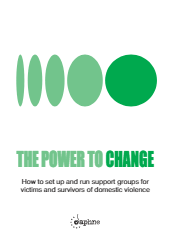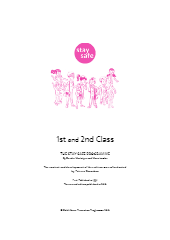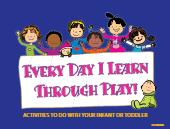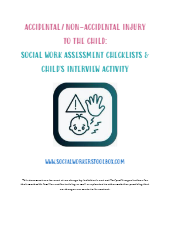 The Power to Change booklet is a valuable resource for setting up and running support groups for domestic violence survivors. It covers topics such as facilitator competencies, group development and management, group policies, and the Power to Change program. The program includes the Self-Esteem Program and the Educational Self-Help Program, which address important themes like self-esteem, boundaries, emotions, and assertiveness.
The Power to Change booklet is a valuable resource for setting up and running support groups for domestic violence survivors. It covers topics such as facilitator competencies, group development and management, group policies, and the Power to Change program. The program includes the Self-Esteem Program and the Educational Self-Help Program, which address important themes like self-esteem, boundaries, emotions, and assertiveness.
The booklet also provides practical resources such as model letters, risk assessment tools, safety planning frameworks, and evaluation forms. With its comprehensive information and practical advice, the Power to Change booklet is a valuable tool for professionals and individuals working with domestic violence survivors. It equips them with the knowledge and resources to create supportive environments and empower those affected by domestic abuse.
Contents:
Chapter 1: Introduction to support and self-help groups for survivors of domestic violence
1.1. Introduction
1.2. Development of services for survivors of domestic violence
1.3. The role of survivors’ support and self-help groups in a multi-agency setting
Chapter 2: The facilitator
2.1. Introduction
2.2. Core beliefs and principles
2.3. Key facilitator competencies
2.4. Facilitator roles and responsibilities
2.5. Potential problems in facilitation
Chapter 3: Group development and management
3.1. Introduction
3.2. Planning
3.3. Promoting the service and working in partnership
3.4. Running the group
3.5. Evaluating the effectiveness of the support group
Chapter 4: Group policies and protocols
4.1. Introduction
4.2. Group format
4.3. Group rules
4.4. Group contract
4.5. Group dynamics
4.6. Possible problems and how to overcome them
4.7. Conflict and conflict-solving
Chapter 5: The Power To Change: Programme models
5.1. Introduction
5.2. The ‘Power To Change’ models
5.3. Format of the sessions
Chapter 6: The Power to Change: Self-Esteem Programme
6.1. Introduction
6.2. The Self-Esteem Programme: summary of sessions
Session 1: Defining self-esteem
Session 2: Understanding self-esteem
Session 3: Rights
Session 4: Needs
Session 5: Self-evaluation of personal needs
Session 6: Education and socialisation of girls and young women
Session 7: Gender stereotyping and social norms
Session 8: Needs within a relationship
Sessions 9 and 10: Boundaries
Sessions 11 and 12: Emotions: anger, guilt, grief and fear
Session 13: Assertiveness
Session 14: Endings and new beginnings
Chapter 7: The Power To Change: Educational Self-Help Programme
7.1. Introduction
7.2. The educational self-help programme: summary of sessions
Session 1: Basic rights
Session 2: Definition of abuse
Session 3: Why is it so hard to leave?
Session 4: Families and children
Session 5: Boundaries
Session 6: Coping with grief, fear and guilt
Session 7: Coping with anger
Sessions 8 and 9: Assertiveness skills and boundary setting
Session 10: Assertiveness techniques
Session 11: Dealing with requests and authority figures
Session 12: Practicing assertiveness
Session 13: Healthy relationships
Session 14: Endings and new beginnings
Chapter 8: Informal self-help groups
8.1. Introduction
8.2. Benefits of self-help groups
8.3. Running the group
8.4. Group rules
8.5. Organisation and format
8.6. Trouble shooting
Appendices
Appendix 1: Model letter – multi-agency working
Appendix 2: Risk assessment tools
Appendix 3: Individual safety planning framework
Appendix 4: Weekly evaluation
Appendix 5: Mid-course evaluation
Appendix 6: Final evaluation
Appendix 7: Equal opportunities monitoring form (Women’s Aid, UK)
Appendix 8: Group contract for ‘Power To Change’
Appendix 9: Icebreakers
Appendix 10: Details of the course
Appendix 11: Basic process guidelines
Appendix 12: My bill of rights
Appendix 13: I need, I want, I deserve
Appendix 14: Evaluation of needs
Appendix 15: Duluth Equalities Wheel
Appendix 16: Duluth Power and Control Wheel
Appendix 17: Setting boundaries
Appendix 18: The cycle of shame: moving on from shame and guilt
Appendix 19: Anger management
Appendix 20: Assessing levels of assertiveness
Appendix 21: Definitions of violence and abuse
FREE PDF DOWNLOAD OF PROGRAMME FOR VICTIMS AND SURVIVORS OF DOMESTIC ABUSE – THE POWER TO CHANGE








